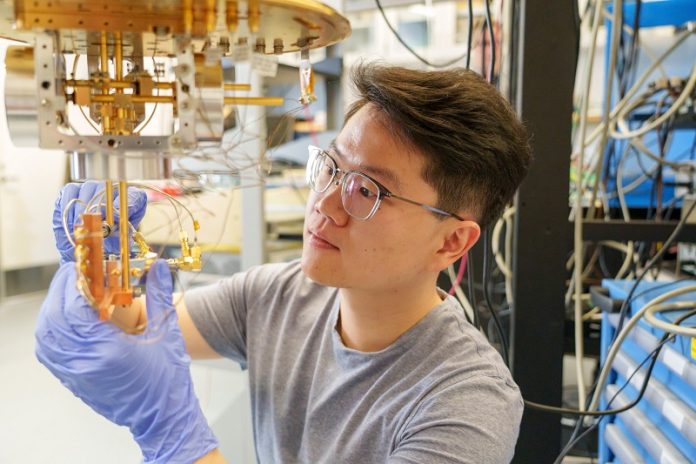
When most people imagine quantum computers, they think of machines that use particles of light, called photons, to process information.
But a new study from the University of Chicago suggests that sound—at the tiniest possible scale—could be an even better way to build the computers of tomorrow.
In research published in Nature Physics, a team from the Pritzker School of Molecular Engineering demonstrated that they could control phonons, which are the quantum particles of vibration.
On a larger scale, phonons would simply be considered sound waves, but at the microscopic level they behave like single particles that can carry information.
The breakthrough came when the researchers showed that they could deterministically control the phase of a phonon by scattering it off a superconducting qubit, the quantum version of a computer bit.
Deterministic means the process has a predictable cause-and-effect outcome—if you do A, you always get B.
This is in sharp contrast to most quantum systems that rely on photons, where randomness is built into the process.
With photons, researchers can only tell if an operation worked after measuring the result, and even then there’s always a chance of failure.
“Having deterministic quantum operations gives this hybrid platform an advantage over pure linear optical approaches,” explained first author Hong Qiao, a postdoctoral researcher in Andrew Cleland’s lab.
By removing the randomness, phonon-based systems could in theory produce quantum computers that are just as powerful as photon-based machines, but much more reliable.
The ability to control phonons precisely could also support new types of quantum memory and compact devices, as theorist Liang Jiang noted. Already, the Chicago team has designed a prototype quantum random-access memory system using phonons.
Still, the researchers face challenges. Right now, the phonons they generate only last for a few millionths of a second before fading away.
To be useful for quantum computing, their lifetimes need to be extended at least 100-fold.
The short lifespan comes from the very mechanism that makes the system possible: coupling the phonons to a qubit allows control but dampens the vibrations, much like touching a ringing bell stops its sound.
Encouragingly, phonons in isolation can last far longer—up to seconds—because, unlike photons, they don’t leak energy into space.
“Photons are electromagnetic waves, so they have many leakage channels,” explained co-author Zhaoyou Wang. “Phonons just vibrate, and if you isolate them well, they don’t decay.”
For now, the system can scale to about 10 phonons, but Cleland and his team are optimistic. “We’re excited by the advances in this paper, which point to the future possibility of using phonons for quantum computing in a completely solid-state, chip-based format,” Cleland said.
The research suggests that the quantum computers of the future may not glow with light but hum quietly with sound.



